Xi 'an Dongmeng Steel Co., Ltd |
|
Hot Sale Grade 201 202 304 316 410 430 420J1 J2 J3 321 904L 2B BA Mirror Hot Cold Rolled Stainless Steel Coil and strip
stainless steel coil
stainless steel coil Element composition and application
| 200 series(Cr-Mn-Ni) | 201,202 |
| 300 series(Cr-Ni) | 301, 302, 304, 304l,309, 310(S), 316(L), 321, etc |
| 400 series(Cr) | 401,409, 410, 420j1,420j2,430,439,etc. |
Element action:
Carbon ( C ): 1. Improve the deformation resistance and tensile strength of the blade; 2. Increase hardness and wear resistance.
Chromium (CR): 1. Improve hardness, tensile strength and toughness; 2. Wear and corrosion resistance.
Cobalt (CO): 1. Increase hardness and strength so that it can withstand high temperature quenching; 2. It is used to strengthen some individual properties of other elements in more complex alloys.
Copper (Cu): 1. Enhance corrosion resistance; 2. Enhance wear resistance.
Manganese (MN): 1. Increase hardenability, wear resistance and tensile strength; 2. Removing oxygen from molten metal by separation oxidation and separation vaporization; 3. When added in large quantities, it improves the hardness, but improves the brittleness.
Molybdenum (MO): 1.Enhance strength, hardness, hardenability and toughness; 2. Improve machinability and corrosion resistance.
Nickel (Ni): 1. Enhance strength, hardness and corrosion resistance.
Phosphorus (P): 1. Enhanced strength, machinability and hardness. 2. It is easy to crack when the concentration is too high
Silicon (SI): 1. Improve ductility; 2. Increase tensile strength; 3. Remove oxygen from molten metal by separate oxidation and separate vaporization.
Sulfur (s): 1. Use in small quantities to improve machinability.
Tungsten (W): 1. Increase strength, hardness and toughness.
Vanadium (V): 1. Increase strength, hardness and seismic resistance.2.Prevent the generation of particles.
Because stainless steel has many ideal properties required by
building materials, it can be said to be unique in metals, and its
development continues. In order to make stainless steel more
neutral in traditional applications, existing types have been
improved, and new stainless steel is being developed to meet the
strict requirements of advanced architectural applications. Due to
the continuous improvement of production efficiency and quality,
stainless steel has become one of the most cost-effective materials
selected by architects. Stainless steel integrates performance,
appearance and use characteristics, so stainless steel will still
be one of the best building materials in the world.
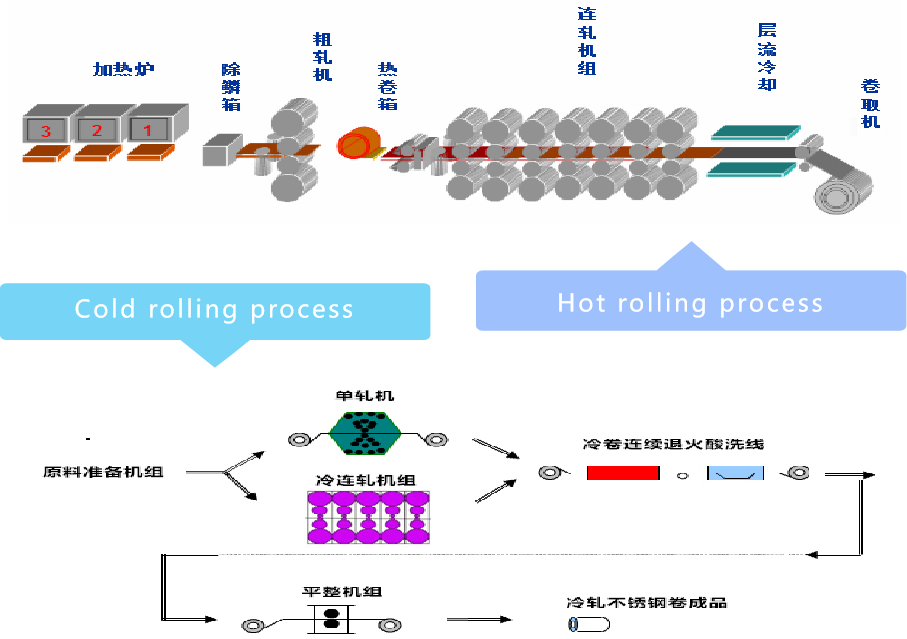

| NamName | ThicThicknesskness | WidthWidth |
| Stainless steel hot rolled coil | 1.5-15mm | 1000mm 1219mm 1500mm 1800 mm 2000mm |
| Cold rolled stainless steel coil | 0.3-3.0mm | 1000mm 1219mm 1500mm |
| Stainless steel cold rolled coil | 0.1-3.0mm | 500mm 1600mm |
| Common materials:201,202,301,304,309(S),310(S),316(L),321,409,410,430,etc. | ||
| If the customer's demand is large, we can cut it according to the customer's size Another can do wire drawing plate, anti - slide plate, electroplating plate. | ||
Stainless steel coil is widely used in chemical industry, food, medicine, papermaking, petroleum, atomic energy and other industries, as well as various parts of buildings, kitchenware, tableware, vehicles and household appliances.
| ||
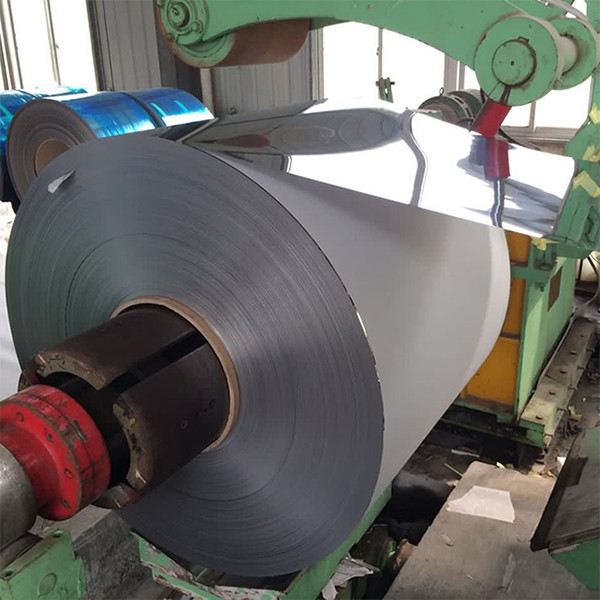
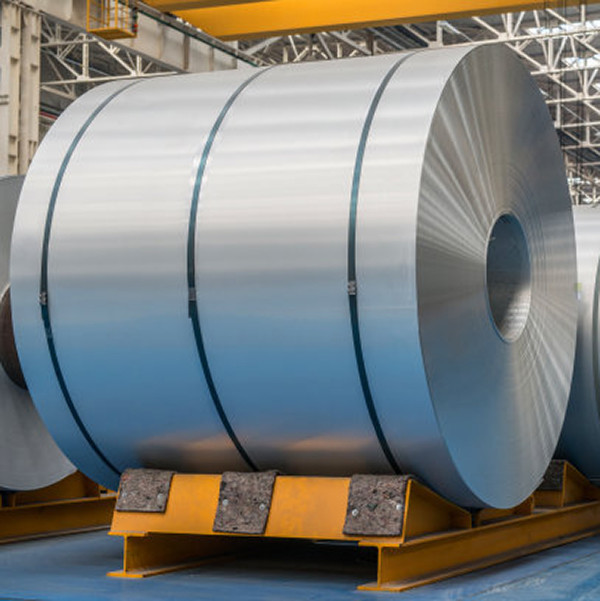
200 series: Cr Mn Ni
201: it is a high manganese and low nickel stainless steel with low
nickel content and poor corrosion resistance. It is widely used in
all kinds of tabletops, countertops, kitchenware, outdoor
decoration engineering, urban decoration industry and high-grade
household products.
202: stainless steel is widely used in architectural decoration,
municipal engineering, highway guardrails, hotel facilities,
shopping malls, glass handrails, public facilities and other
places.
300 series: Cr Ni austenitic stainless steel
301: good ductility, used for molding products. It can also be
hardened rapidly by machining. Good weldability. The wear
resistance and fatigue strength are better than 304 stainless
steel.
302: the corrosion resistance is the same as that of 304. Because
the carbon content is relatively high, the strength is better.
303: it is easier to cut than 304 by adding a small amount of
sulfur and phosphorus.
304: general model; 18 / 8 stainless steel. Products such as:
corrosion resistant containers, tableware, furniture, railings,
medical equipment. The standard ingredient is 18% chromium plus 8%
nickel. It is a non-magnetic stainless steel whose metallographic
structure cannot be changed by heat treatment. The GB brand is
06cr19ni10.
304 L: it has the same characteristics as 304, but it is low
carbon, so it is more corrosion resistant and easy to heat
treatment, but its mechanical property is poor. It is suitable for
products that are welded and difficult to heat treatment.
304N: with the same characteristics as 304, it is a
nitrogen-containing stainless steel. Nitrogen is added to improve
the strength of the steel.
309: better temperature resistance than 304, up to 980 ℃.
309S: with a large amount of chromium and nickel, it has good heat
resistance and oxidation resistance. Products such as heat
exchanger, boiler components and jet engine.
310: excellent high temperature oxidation resistance, with a
maximum service temperature of 1200 ℃.
316: after 304, the second most widely used steel is mainly used in
food industry, watch accessories, pharmaceutical industry and
surgical equipment. Molybdenum is added to obtain a special
corrosion-resistant structure. Because it has better chloride
corrosion resistance than 304, it is also used as "marine steel".
SS316 is usually used in nuclear fuel recovery units. Grade 18 / 10
stainless steel generally meets this application grade.
316 L: low carbon, so it is more corrosion-resistant and easy to
heat treatment. Products such as chemical processing equipment,
nuclear power generator and refrigerant storage tank.
321: in addition to reducing the risk of weld corrosion due to the
addition of titanium, other properties are similar to 304.
347: add stabilizing element niobium, which is suitable for welding
aviation appliance parts and chemical equipment.
400 series: Ferritic and martensitic stainless steel, manganese
free, can replace 304 stainless steel to a certain extent
408: good heat resistance, weak corrosion resistance, 11% Cr, 8%
Ni.
409: the cheapest model (British and American), usually used as
automobile exhaust pipe, is ferritic stainless steel (chromium
steel).
410: martensite (high strength chromium steel), good wear
resistance and poor corrosion resistance.
416: sulfur was added to improve the processability of the
material.
420: "cutting tool grade" martensitic steel, similar to the
earliest stainless steel such as Brinell high chromium steel. It is
also used for surgical tools, which can be made very bright.
430: ferritic stainless steel, for decoration, such as automotive
accessories. Good formability, but poor temperature resistance and
corrosion resistance.
440: high strength cutting tool steel, with slightly higher carbon
content, can obtain higher yield strength after appropriate heat
treatment, and the hardness can reach 58hrc. It is one of the
hardest stainless steels. The most common application example is
"razor blade". There are three common models: 440A, 440b, 440C, and
440f (easy to process).
500 Series: heat resistant chromium alloy steel.
600 Series: Martensitic precipitation hardening stainless steel.
Element action:
Carbon ( C ): 1. Improve the deformation resistance and tensile strength of the blade; 2. Increase hardness and wear resistance.
Chromium (CR): 1. Improve hardness, tensile strength and toughness; 2. Wear and corrosion resistance.
Cobalt (CO): 1. Increase hardness and strength so that it can withstand high temperature quenching; 2. It is used to strengthen some individual properties of other elements in more complex alloys.
Copper (Cu): 1. Enhance corrosion resistance; 2. Enhance wear resistance.
Manganese (MN): 1. Increase hardenability, wear resistance and tensile strength; 2. Removing oxygen from molten metal by separation oxidation and separation vaporization; 3. When added in large quantities, it improves the hardness, but improves the brittleness.
Molybdenum (MO): 1.Enhance strength, hardness, hardenability and toughness; 2. Improve machinability and corrosion resistance.
Nickel (Ni): 1. Enhance strength, hardness and corrosion resistance.
Phosphorus (P): 1. Enhanced strength, machinability and hardness. 2. It is easy to crack when the concentration is too high
Silicon (SI): 1. Improve ductility; 2. Increase tensile strength; 3. Remove oxygen from molten metal by separate oxidation and separate vaporization.
Sulfur (s): 1. Use in small quantities to improve machinability.
Tungsten (W): 1. Increase strength, hardness and toughness.
Vanadium (V): 1. Increase strength, hardness and seismic resistance.2.Prevent the generation of particles.
Because stainless steel has many ideal properties required by
building materials, it can be said to be unique in metals, and its
development continues. In order to make stainless steel more
neutral in traditional applications, existing types have been
improved, and new stainless steel is being developed to meet the
strict requirements of advanced architectural applications. Due to
the continuous improvement of production efficiency and quality,
stainless steel has become one of the most cost-effective materials
selected by architects. Stainless steel integrates performance,
appearance and use characteristics, so stainless steel will still
be one of the best building materials in the world.
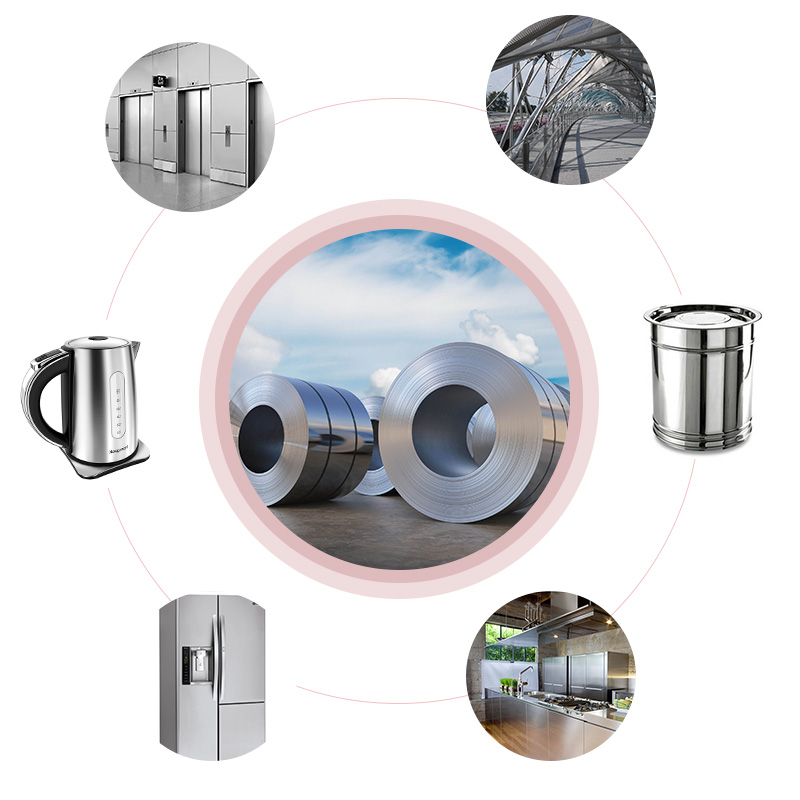
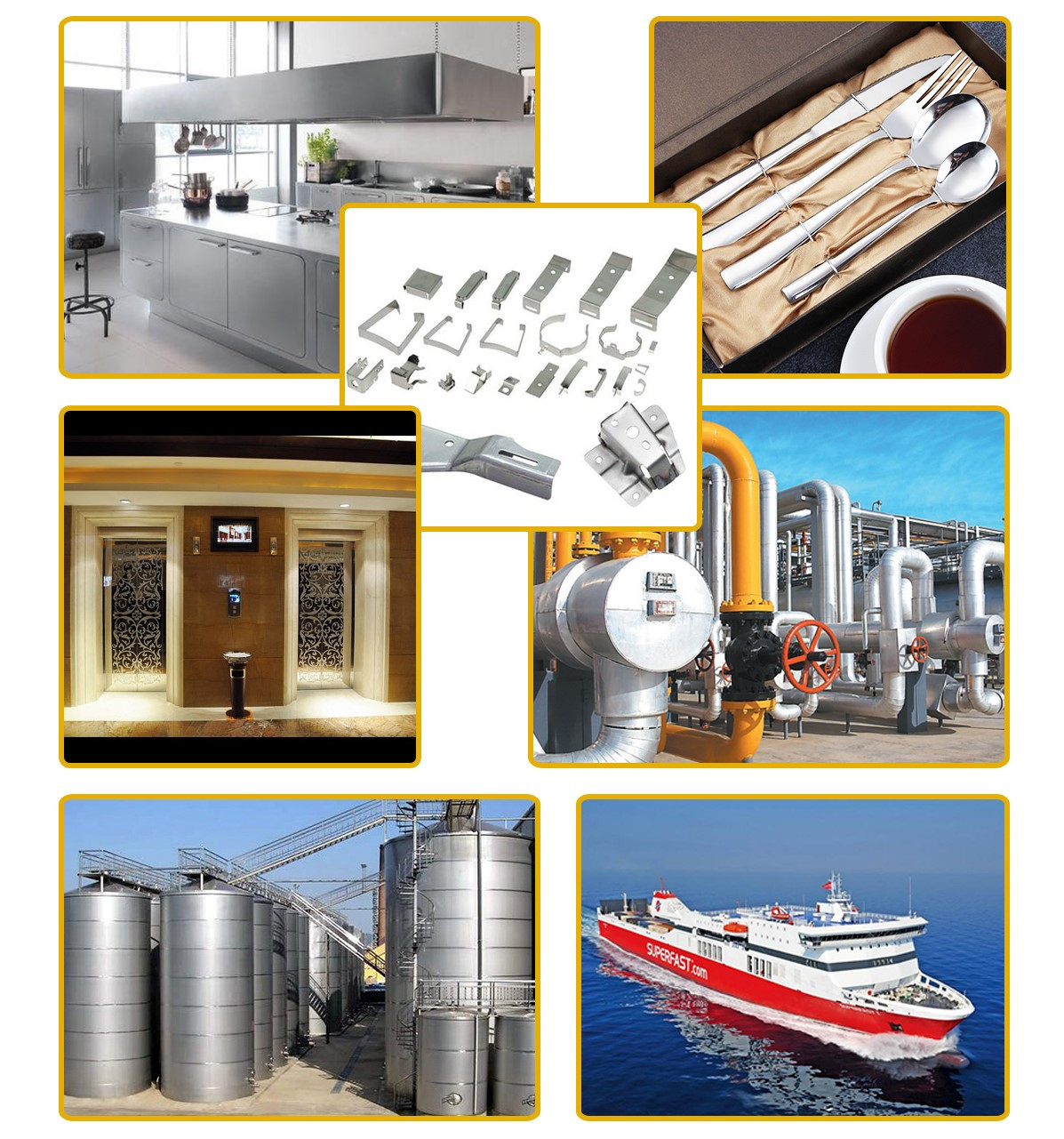

Packing&Shipping
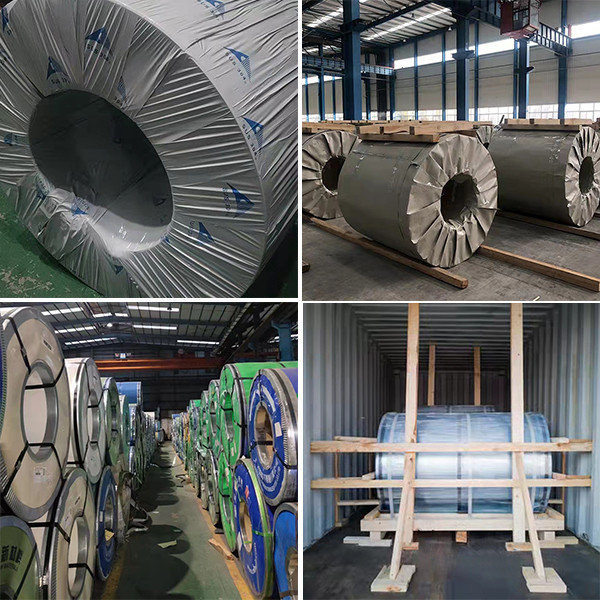
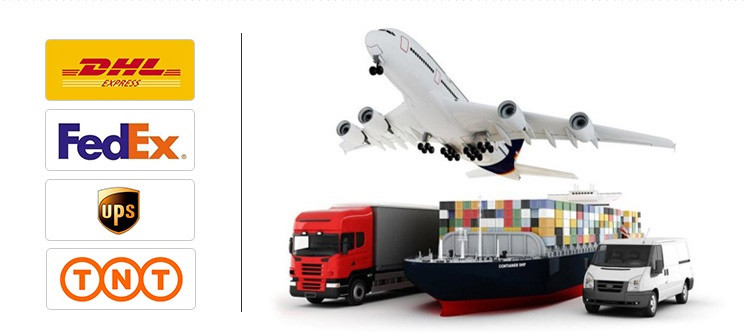
Standard Export Seaworthy Package.Suitable for all kinds of
transport,or follow clients' request
Packing Details : Bundle with steel strip, waterproof paper and
plastic coverage
Delivery Details : Use wooden trays to facilitate loading and
unloading
20ft GP:5898mm(Length)x2352mm(Width)x2393mm(High)
40ft GP:12032mm(Length)x2352mm(Width)x2393mm(High)
40ft HC:12032mm(Length)x2352mm(Width)x2698mm(High)
20 feet container can load 25 to 26 tons products whose length is
under 5.8m
40 feet container can load 25 to 26 tons products whose length is
under 11.8m